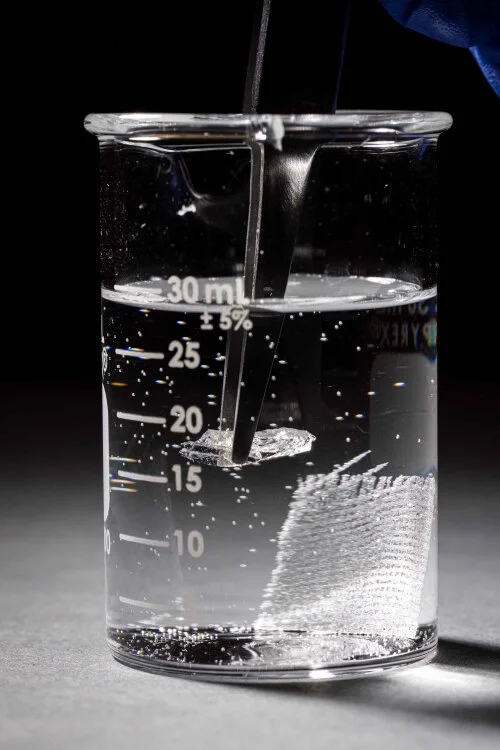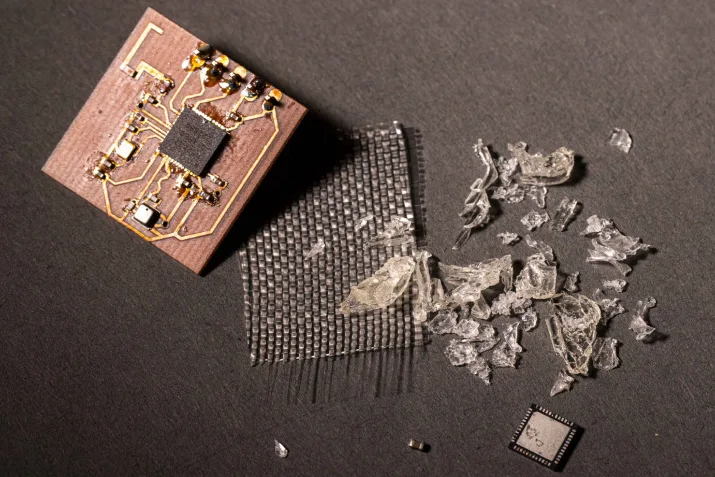Electronic waste is a mounting problem, with millions of devices discarded every year. But what if circuit boards, the heart of our gadgets, could simply dissolve for easy recycling?
Researchers at the University of Washington have developed just that: a printed circuit board that transforms into ‘jelly’ when it’s time to recycle. This breakthrough tackles a critical pain point in e-waste management by turning tough-to-recycle tech into a problem that almost solves itself.
Traditional circuit boards are tough. Made from a material called FR4, which combines woven fiberglass and epoxy resin, these boards are built to last. They resist fire and chemicals, making them nearly indestructible in conditions that might damage other components.
This durability is great for product lifespan but a nightmare for recycling. “Our circuit boards are designed to withstand almost anything, which unfortunately means they’re also resistant to recycling processes,” says Vikram Iyer, co-senior author of the study.
The solution? A new type of plastic, known as a vitrimer, developed in 2015. Under normal conditions, it’s as solid and dependable as traditional materials.

But introduce high heat or the right solvents, and it breaks down into a malleable jelly that can be easily reformed into new boards. This means not only a cleaner recycling process but also a more efficient one. By dissolving these ‘jelly’ boards in a solvent, valuable components like glass fibers and metals are easily separated and recovered.
This new design enhances the recovery of valuable materials for a double punch of sustainability. Because traditional PCB recycling methods involve burning away the FR4 to salvage metals like gold and copper, the process is both environmentally damaging and inefficient.
In trials, researchers successfully reclaimed 98% of the vitrimer substrate, 100% of the glass fiber, and 91% of the solvent.
The performance of these vPCBs also holds up under scrutiny. Despite their recyclability, they demonstrate strength and electrical properties on par with traditional FR4 boards. This means that integrating vPCBs into existing manufacturing processes could be seamless, requiring minimal adjustments.
More To Discover
- Buildings as Batteries: Rechargeable Concrete Could Transform Urban Energy
- Labor Crisis Sparks AI Boom on US Farms: Can They Save Our Food Supply?
- Trees Are The Unexpected Climate Challengers on the Great Plains
- Chipotle’s Investment in Cutting-Edge Agriculture and Fertilizer Tech Aims to Shed Greenwash Shadow
With vPCBs, the future of electronics could be far greener. As this technology develops, it holds the potential to drastically cut down the environmental impact of electronic waste, offering a smarter, more sustainable solution to a global issue.
Source: Nature Sustainability



















